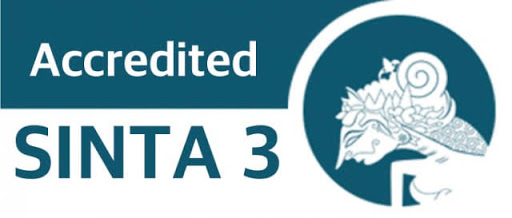Understanding the interaction between teacher and students in senior high school classroom
DOI:
https://doi.org/10.12928/ijei.v4i1.10299Keywords:
academy reaction, social reaction, student-teacher interactionAbstract
Education plays a central role in the formation of individuals and society. The relationship between teachers and students in the educational environment is a key factor that influences students' learning experiences and development. Teachers, as learning agents, have the responsibility to create an environment that supports students' academic and social growth. This research focuses on teacher-student interactions related to Academy Reaction and Social Reaction in class X students at SMA Muhammadiyah 4 Yogyakarta. In the context of lessons, including physics subjects, there has been no research that specifically examines teacher-student interaction relationships in the aspects of Academy Reaction and Social Reaction at SMA Muhammadiyah 4 Yogyakarta. This research aims to fill this knowledge gap and identify factors that influence students at these schools. This research provides valuable insight into the role of teachers in students' academic and Social Reactions and emphasizes the need to consider variations in teaching approaches to meet students' diverse needs.
References
Geana, I. M. (2017). Învăţarea vizibilă. Ghid pentru profesori. Revista de Pedagogie, 65(1), 134-136. https://doi.org/10.26755/revped/2017.1/134
Hamre, B. K., & Pianta, R. C. (2001). Early Teacher-Child Relationships and the Trajectory of Children’s School Outcomes through Eighth Grade. Child Development, 72(2), 625–638. https://doi.org/10.1111/1467-8624.00301
Kinasih, A., & Mariana, E. (2021). Hubungan antara motivasi belajar dan minat baca siswa dengan hasil belajar fisika siswa kelas VIII SMP PGRI 2 Sekampung. Jurnal Pendidikan Fisika Undiksha, 11(1), 39. https://doi.org/10.23887/jjpf.v11i1.32396
Marsal, A., & Hidayati, F. (2017). Pengaruh smartphone terhadap pola interaksi sosial pada anak balita di lingkungan keluarga pegawai UIN Sultan Syarif Kasim Riau. Jurnal Ilmiah Rekayasa dan Manajemen Sistem Informasi, 3(1), 78–84.
Merpati, T., Lonto, A. L., & Biringan, J. (2018). Kreativitas guru dalam meningkatkan hasil belajar siswa di SMP Katolik Santa Rosa Siau Timur Kabupaten Sitaro. Jurnal Civic Education: Media Kajian Pancasila Dan Kewarganegaraan, 2(2), 55–61.
Pusparini, K. D. C., Suma, K., & Suswandi, I. (2020). Hubungan Motivasi Intrinsik, Persepsi Siswa, Motivasi Intrinsik dan Persepsi Siswa terhadap Pelajaran Fisika dan Prestasi Belajar Fisika Siswa Kelas X MIPA SMA. Jurnal Pendidikan Fisika Undiksha, 10(1), 12. https://doi.org/10.23887/jjpf.v10i1.26719
Sari, R. I. (2019). Analisis Tingkat Kemandirian Belajar Siswa Pada Mata Pelajaran Fisika Kelas XII MAN 1 Batang Hari. Jurnal Pendidikan Fisika dan Teknologi, 5(2), 296–304. https://doi.org/10.29303/jpft.v5i2.1436
Walker, C. O., Greene, B. A., & Mansell, R. A. (2006). Identification with academics, intrinsic/extrinsic motivation, and self-efficacy as predictors of cognitive engagement. Learning and Individual Differences, 16(1), 1–12. https://doi.org/10.1016/j.lindif.2005.06.004
Yestiani, D. K., & Zahwa, N. (2020). Peran Guru dalam Pembelajaran pada Siswa Sekolah Dasar. Fondatia, 4(1), 41–47.

Downloads
Published
Issue
Section
License
Copyright (c) 2023 Ririn Vijayanti Indah Saputri, Toni Kus Kus Indratno, Rani Kusfiana

This work is licensed under a Creative Commons Attribution-ShareAlike 4.0 International License.
Authors who publish with this journal agree to the following terms:
- Authors retain copyright with the work simultaneously licensed under a Creative Commons Attribution License that allows others to share the work with an acknowledgement of the work's authorship and initial publication in this journal.
- Authors are able to enter into separate, additional contractual arrangements for the non-exclusive distribution of the journal's published version of the work (e.g., post it to an institutional repository or publish it in a book), with an acknowledgement of its initial publication in this journal.
- Authors are permitted and encouraged to post their work online (e.g., in institutional repositories or on their website) prior to and during the submission process, as it can lead to productive exchanges, as well as earlier and greater citation of published work (See The Effect of Open Access).




